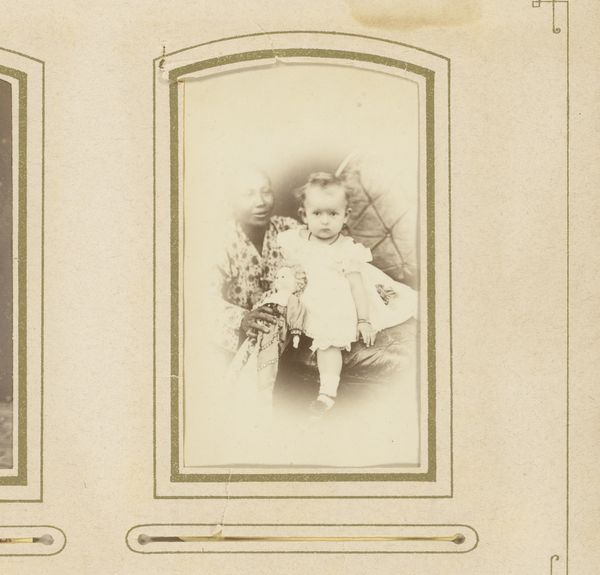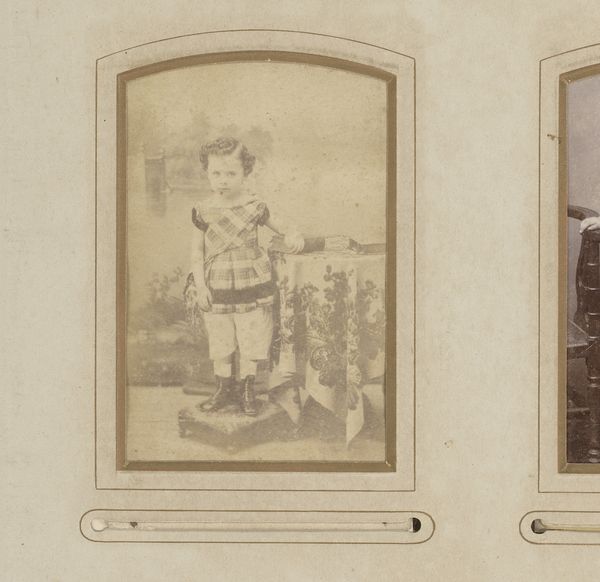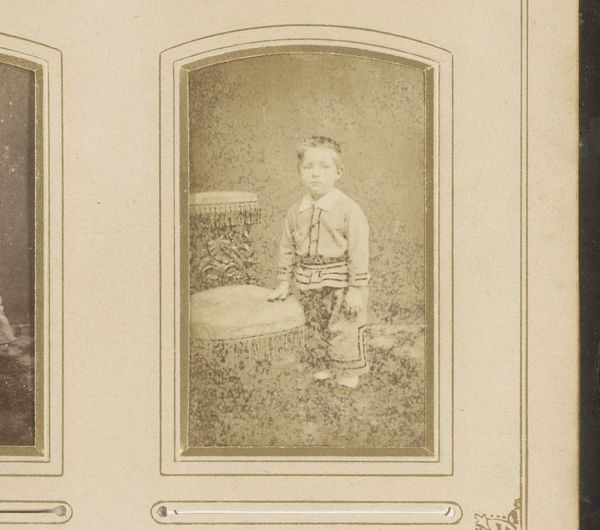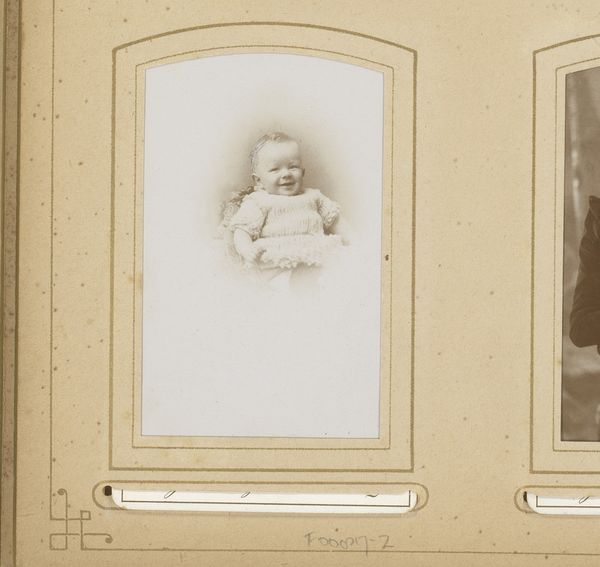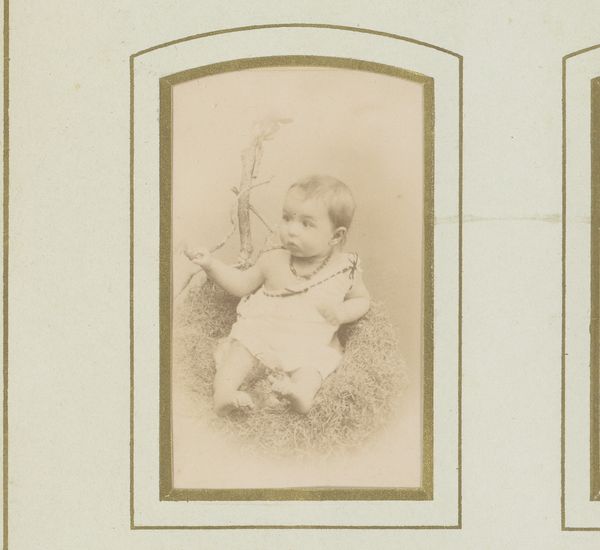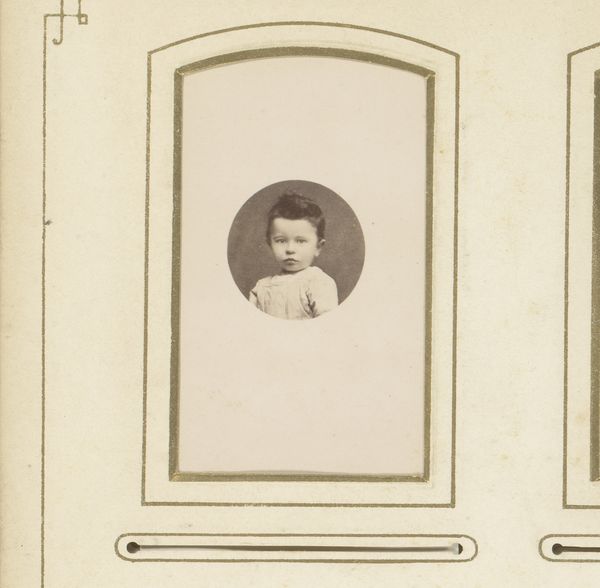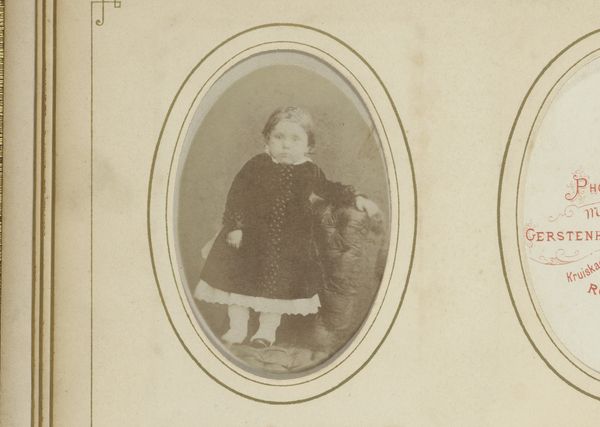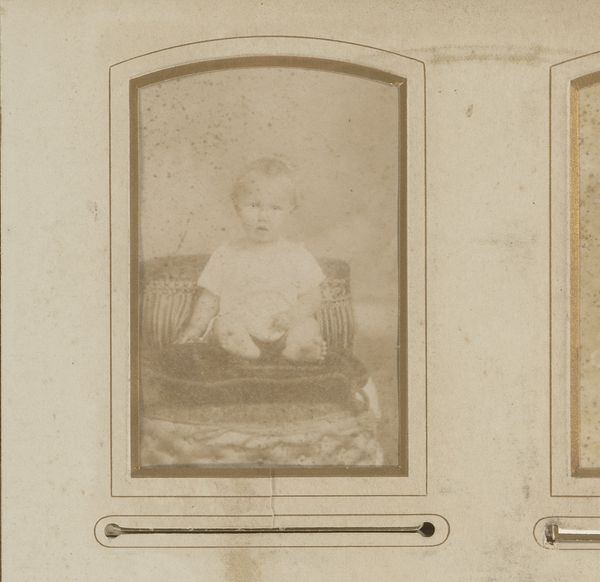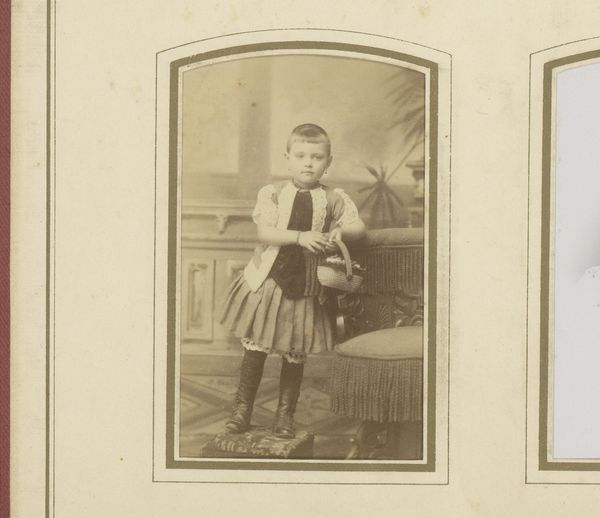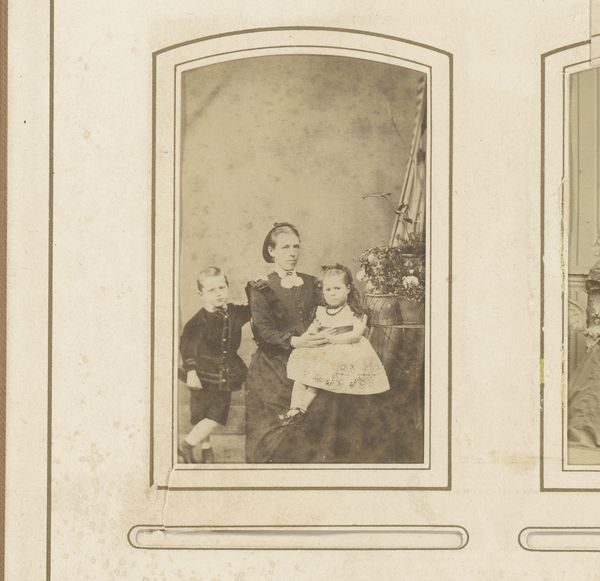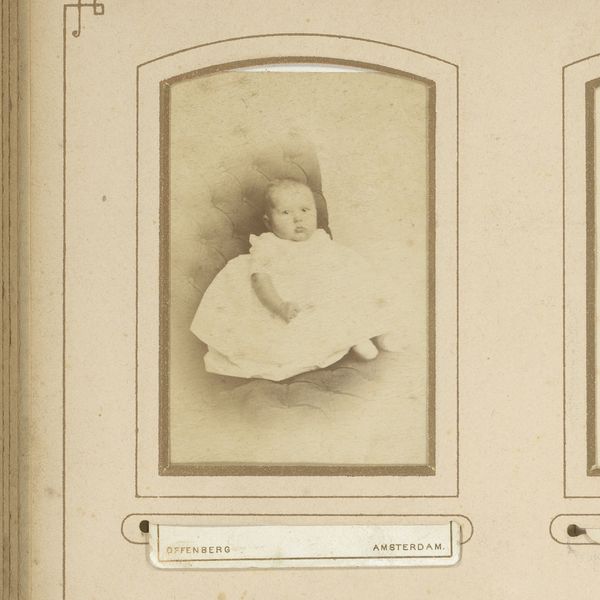
photography, albumen-print, pendant
#
portrait
#
charcoal drawing
#
photography
#
albumen-print
#
pendant
Dimensions: height 80 mm, width 52 mm
Copyright: Rijks Museum: Open Domain
Curator: Immediately, I'm struck by a sense of formality and perhaps even a touch of melancholy. It's a small, almost sepia-toned world captured here. Editor: Precisely! This albumen print, aptly named "Portret van een vrouw met muts" or "Portrait of a woman with a hat," is attributed to Albert Greiner and dates roughly between 1861 and 1887. It's part of the Rijksmuseum's collection, offering a glimpse into bourgeois portraiture of that era. Curator: The sitter's attire feels weighted somehow. Her dark fur and headpiece, while signifying status, seem like constricting armor. I can't help but consider what societal expectations might have shaped her expression. Was agency a factor, or lack of agency a factor, in producing this image? Editor: That's insightful. We must consider the evolving role of photography in solidifying societal hierarchies. Portraiture was no longer exclusively for the elite with painted portraits. Photography democratized representation, allowing a broader section of the middle class to assert their social standing and document their likenesses. Curator: True, but this act of asserting standing also came at the cost of being further beholden to these prescribed codes. I'm reminded of theories around performativity, specifically around gender and social class, as reflected here. The rigid posing, for example, is an artificial creation meant to reinforce this image of prestige. Editor: Definitely. The albumen print process itself played a role. The use of egg whites as a binding agent lent the image its distinct tonal range. And it’s interesting how this medium enabled mass reproduction and circulation of images, creating visual culture. In short, images became political actors that perpetuated, even canonized norms. Curator: Canonized – that's key! In seeing these pieces together –the clothing, pose, method of portraiture– what is really put in focus for the viewer is who this is a portrait of, and from there we see and question the power structures that beget this photograph, that surround this figure. Editor: Indeed. We have the historical framework of how social conventions played a key role during that period, but you helped identify the nuances that inform our understanding, encouraging an intersectional awareness. Curator: Exactly, thank you. Art is not static; our dialogues bring awareness to this, enriching it through contemporary discourse.
Comments
No comments
Be the first to comment and join the conversation on the ultimate creative platform.
